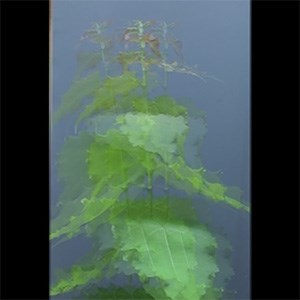Contact
Department of Forest Genetics and Plant Physiology

The sight of trees swaying in the wind has captivated the imagination of artists and nature enthusiasts. However, for the trees themselves, this continuous mechanical stimulation can be a source of stress. A research team led by Ewa Mellerowicz from UPSC and SLU set out to study the effect of such repetitive flexing on aspen trees and found that the trees grew faster.
The study was published yesterday in the journal New Phytologist. Researchers from Umeå Plant Science Centre, a collaboration between Swedish University of Agricultural Sciences and Umeå University, were leading the study and were supported by researchers from RISE (Research Institutes of Sweden), Umeå University and from the Laboratory of Growth Regulators, a joint facility between the Faculty of Science, Palacký University, and the Institute of Experimental Botany, Czech Academy of Sciences.
It is long known that plants exposed to continuous mechanical stimulation, such as wind, adjust their growth and development. Trees that are repeatedly bent by the wind tend to grow shorter and sturdier as a defense against mechanical stress. However, the research team around Ewa Mellerowicz, group leader at UPSC and professor at the Swedish University of Agricultural Sciences, observed somewhat different results when they exposed aspen trees to recurrent flexing.
“We used an automated conveyor belt system carrying young aspen trees and applied flexing stress by moving the belt. Especially when the belt started to accelerate and when it stopped, the trees experienced low-intensity multidirectional stem flexures”, explains János Urbancsok, first author of the paper and former postdoc in Ewa Mellerowicz’s group. His colleague Evgeniy Donev, postdoc in the same group and shared first author of the paper, adds:
“Compared to control trees that were growing on a non-moving belt besides them, the flexed trees grew faster with increased stem diameter and root growth. Similar effects have been observed before in bent or touched plants, but we were astonished to also see an increased shoot elongation and leaf size. This was not reported previously.”
The researchers speculated that stem elongation and leaf expansion might have been stimulated by vibrations associated with the shaking which was applied to the plants when the conveyor belt was abruptly accelerated or brought to a halt. They knew from other studies that vibrations coming for example from sound can stimulate growth in general. This led them to delve deeper and investigate if they could find more parallels or differences in response to vibration or other mechanical stimulation such as bending or touching.
To start, they analysed the properties of the “flexure wood” - the wood that is formed under mechanical stress such as stem flexing. They discovered that this wood contained more cellulose and formed gelatinous fibres, similar to the wood fibres formed on the upper side of a bent tree. These fibres were much easier to convert into sugars which makes “flexure wood” interesting for biofuel production.
In a next step, the researchers examined differences in gene activities and concentrations of plant hormones. Plant hormones are low-concentrated growth-regulating compounds known to be involved in stress responses, especially regulating gravity-induced changes that occur for example under bending. Most of the changes in gene activity and plant hormone concentrations were in line with prior findings but the researchers also discovered something new: changes in the metabolism of polyamines.
“We are not sure yet how to interpret these results”, says Ewa Mellerowicz. “Polyamines play important roles in regulating plant growth and development but also in stress responses. It might be that polyamines were just not analysed in previous studies, or they are only induced by vibration and not by bending or other forms of gravistimulation. These questions need to be addressed in future studies, but we believe that our study gives novel and important insights into the mechanobiology of higher plants
Urbancsok, J., Donev, E.N., Sivan, P., van Zalen, E., Barbut, F.R., Derba-Maceluch, M., Šimura, J., Yassin, Z., Gandla, M.L., Karady, M., Ljung, K., Winestrand, S., Jönsson, L.J., Scheepers, G., Delhomme, N., Street, N.R. and Mellerowicz, E.J. (2023), Flexure wood formation via growth reprogramming in hybrid aspen involves jasmonates and polyamines and transcriptional changes resembling tension wood development. New Phytol. https://doi.org/10.1111/nph.19307